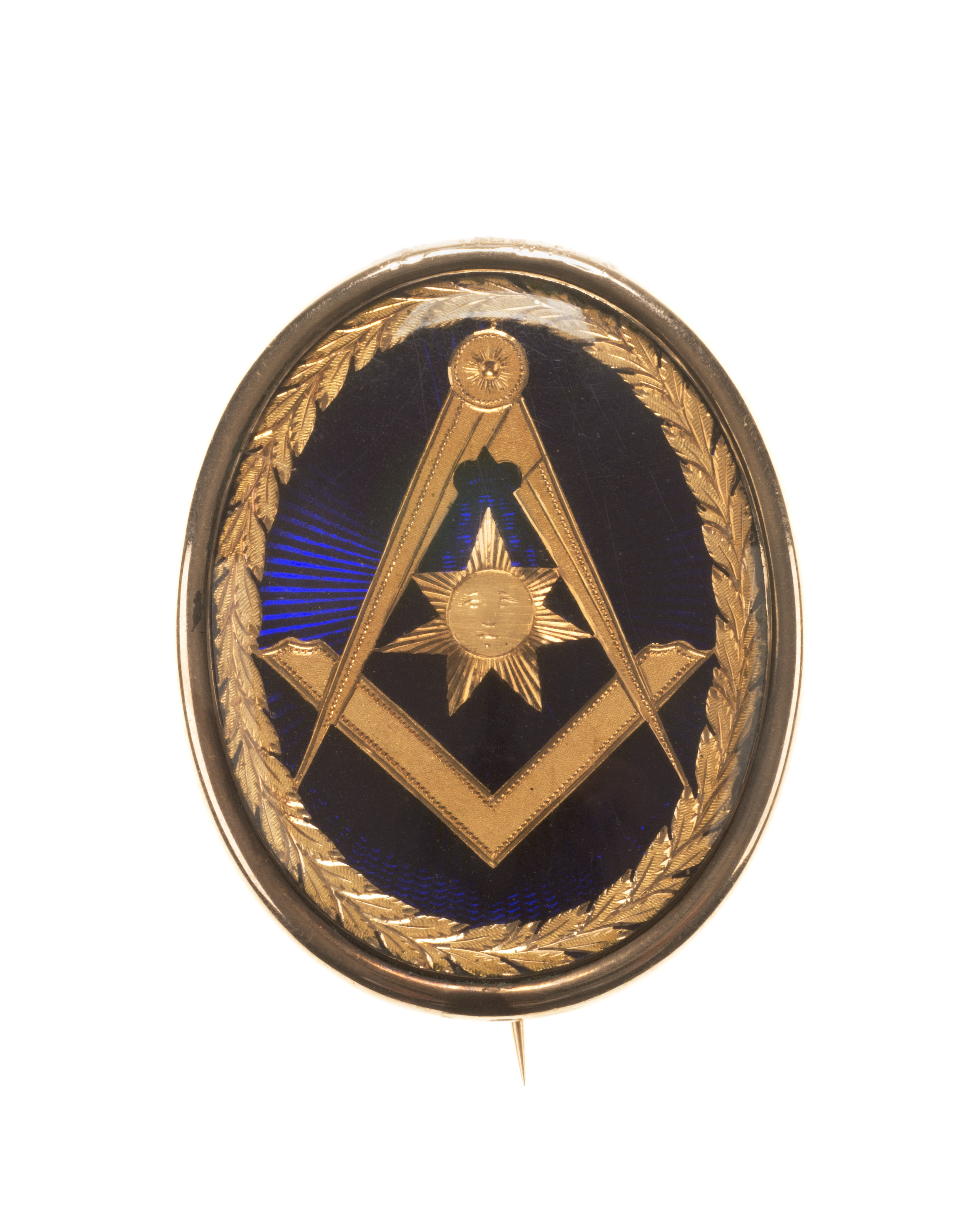From the late 1700s through the present day, many American Masonic lodges have followed the tradition of acknowledging the contributions of a lodge master by presenting him with a personalized jewel to mark the conclusion of his term. Over time and place these jewels, called Past Master’s jewels, have been made of different metals and have come in many sizes and shapes, depending on the jurisdiction, local taste and the issuing lodge’s budget. Historically, the lodge commissioned an engraver to inscribe Past Master’s jewels with the recipient’s name, lodge, and the dates of his term.
Past Master jewels presented in America in the early 1800s often featured the Masonic symbols of a sun within compasses with a quadrant connecting the legs of the compasses. These jewels, usually made of silver, were often cut from a flat sheet of metal. Researchers have observed that this style of Past Master jewel design was likely inspired by jewels used by Scottish Freemasons in the 1700s. The jewel pictured here was executed in an entirely different style. A jeweler made it for London Freemason Robert Scholl (ca. 1781-1832) and it was presented to him in 1820.
Listed as a “gentlemen” in membership records, Scholl worked as a Navy agent, with chambers at Clement’s Inn, in the early 1830s. He was initiated at the Lodge of Union No. 275 in 1814 and served as Master of his lodge before 1820. To thank him for his service in that role, Scholl’s brethren at the Lodge of Union commissioned this gold and enamel jewel. They had Scholl’s jewel inscribed on the back with a heartfelt message, noting that the elegant badge was, “...a testimony of their fraternal Regard—their Personal attachment and the Sense entertained by them of his exertions for the Benefit of the Lodge.” Scholl’s jewel is like a watch or locket in that the decoration on the front is protected by a glass bezel. The bezel covers elements cut from gold in the shape of a square and compasses and a sun. A border of leaves, likely laurel, surrounds the symbols. All of the gold elements are detailed with engraving to give them depth and definition. The symbols appear to float over a background patterned by engine turning and enameled dark blue. The deep color contrasts with the bright gold symbols. Using the pin on the back, Scholl would have worn this jewel on his coat.
What extraordinary service Scholl may have undertaken for his lodge is not known, but this handsome jewel suggests how highly the brothers at the Lodge of Union valued his contributions.

Past Master’s Jewel Made for Robert Scholl, 1819-1820. Probably London, England. Scottish Rite Masonic Museum & Library, Museum Purchase, 97.025.1. Photograph by David Bohl.



